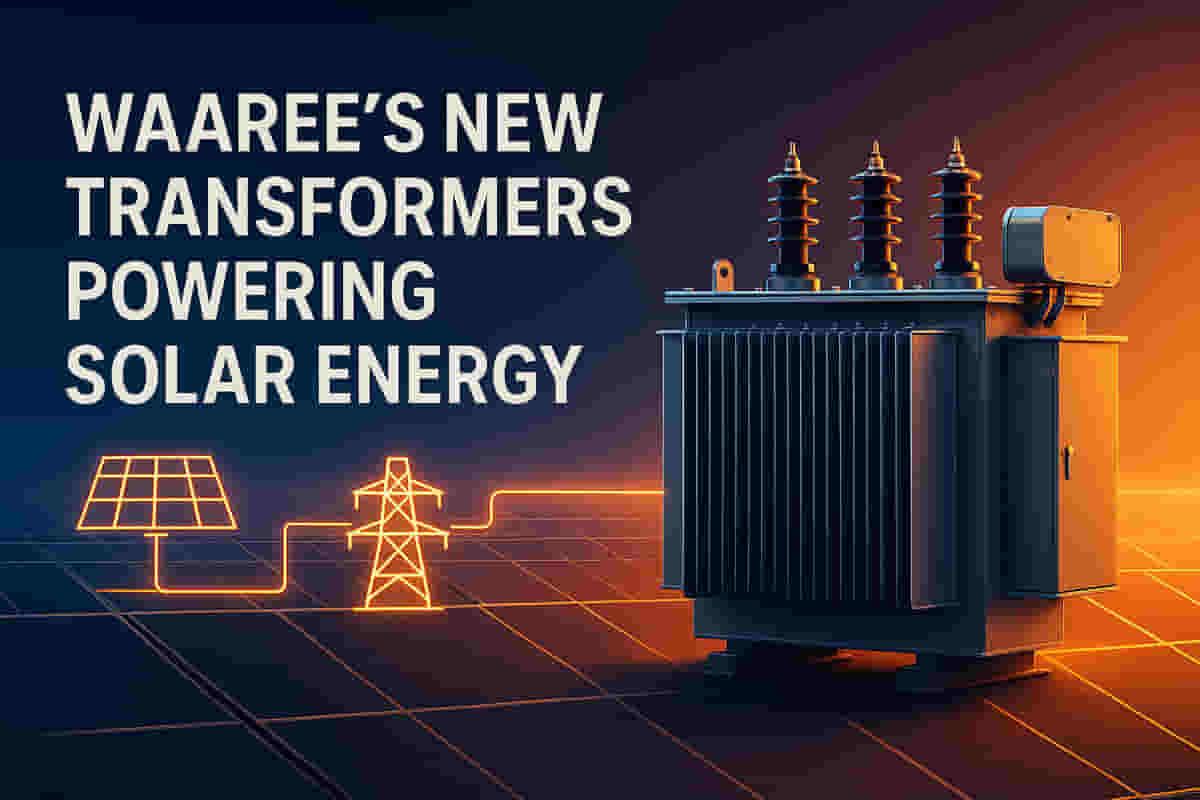Waaree Energies Unveils Next-Generation Transformers for Solar Power Projects
Renewables
|
31st October 2025, 12:35 PM

▶
Stocks Mentioned :
Short Description :
Detailed Coverage :
Waaree Transpower, a subsidiary of Waaree Energies Limited, introduced its new generation of Inverter Duty Transformers (IDTs) at the Renewable Energy India Expo 2025 held in New Delhi on October 31, 2025. These transformers are specifically engineered for utility-scale solar plants, renewable energy developers, industrial captive power units, and smart grid operators. The products are manufactured in a dedicated facility that features backward integration for enhanced quality control and a digital testing laboratory. The flagship model, a 17.6 MVA, 4X660V/33 kV five-winding aluminium-wound IDT, has successfully completed full type testing at the Central Power Research Institute (CPRI). Copper-wound variants are also available.
Viren Doshi, Director at Waaree, stated that this launch underscores the company's dedication to setting industry standards for performance and reliability. The transformers are designed to manage the high switching frequencies and harmonic distortion common in solar power systems, which is crucial for efficiently moving power from solar farms to the electrical grid.
The manufacturing facility operates with specialized dust-free environments, air pressurization, and epoxy flooring, utilizing vapor phase drying ovens for superior insulation and operational reliability.
Impact Rating: 7/10
Difficult Terms: Inverter Duty Transformers (IDTs): Specialized transformers designed to handle the unique electrical characteristics, such as high switching frequencies and harmonic distortion, generated by solar inverters. They are essential for converting direct current (DC) electricity from solar panels into alternating current (AC) electricity that the grid can use. Utility-scale solar plants: Large solar power generation facilities designed to supply electricity to the main power grid. Renewable developers: Companies involved in planning, constructing, and operating projects that generate electricity from renewable sources like solar or wind. Industrial captive units: Manufacturing plants or industrial facilities that generate their own electricity, often using renewable sources, primarily for their own consumption. Smart grid operators: Entities that manage modern electrical grids utilizing digital communication technology to monitor and control electricity flow efficiently. Backward integration: A business strategy where a company controls multiple stages of its production process, from raw materials to final product, to ensure quality and cost management. Digital testing lab: A laboratory equipped with advanced digital instruments to rigorously test the performance, safety, and reliability of products. Full type testing: Comprehensive testing performed on a product prototype to verify its design and performance against established industry standards. CPRI (Central Power Research Institute): A leading Indian research organization that provides testing, evaluation, and certification services for power sector equipment. Harmonic distortion: Unwanted frequencies in an electrical signal that are multiples of the main frequency, which can reduce efficiency and potentially damage equipment. Power evacuation: The process of transmitting electricity generated at a power source (like a solar plant) to the main electrical grid. Vapor phase drying ovens: Specialized ovens used in transformer manufacturing to dry insulation materials using heated vapor, ensuring high insulation quality and long-term reliability. EPC services: Engineering, Procurement, and Construction services, where a single contractor manages the entire lifecycle of a project from design to completion. Battery Energy Storage Systems (BESS): Systems designed to store electrical energy in batteries for later use, often employed to stabilize the grid or store excess renewable energy.